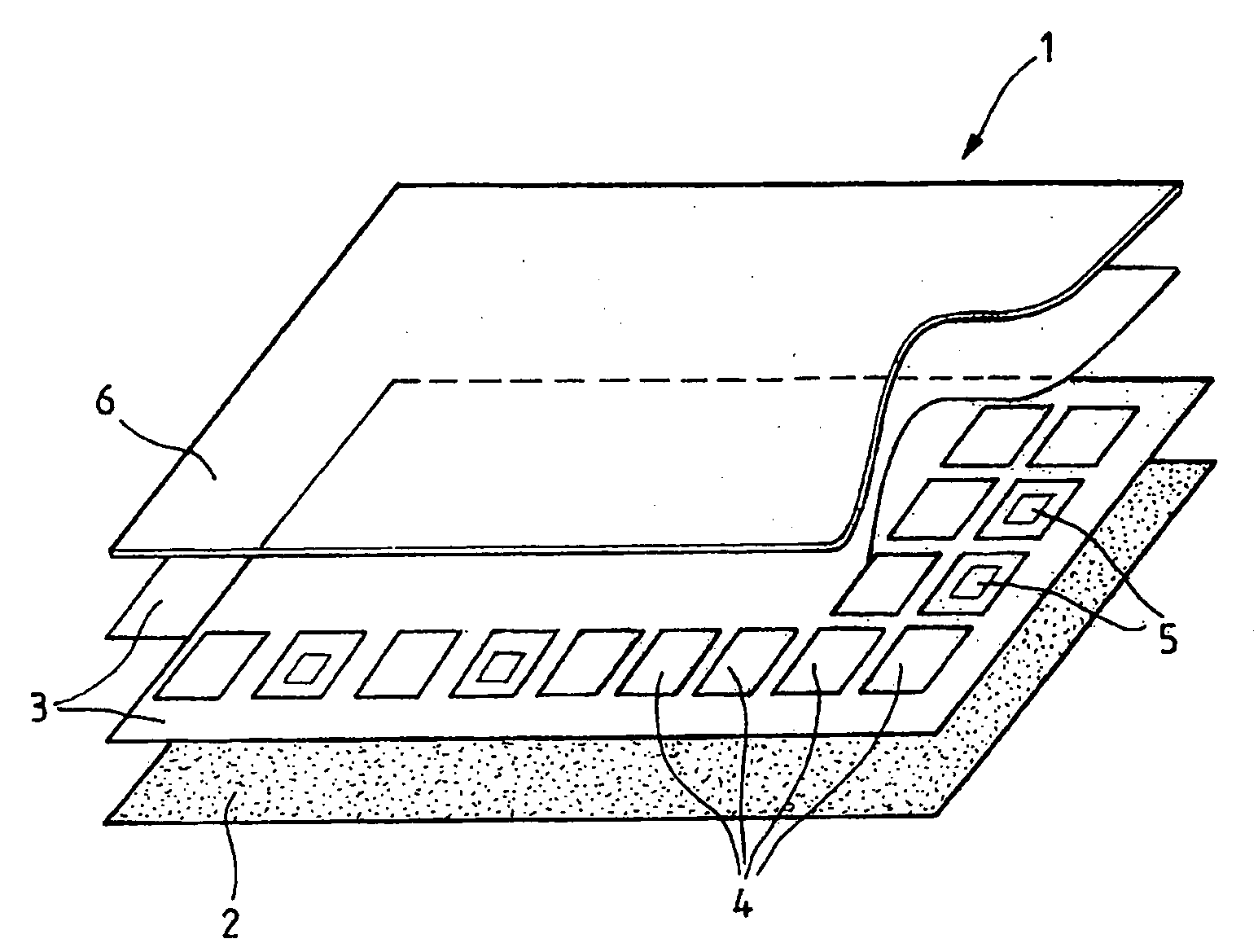Photovoltaic module with an electronic device in the laminated stack
a photovoltaic module and laminated stack technology, applied in the field of photovoltaic modules, can solve the problems of limiting the power received by the shaded cell, damage to the laminated stack and the module, and no longer delivering electrical energy, so as to improve the heat dissipation of the bypass diodes and reduce the cost
- Summary
- Abstract
- Description
- Claims
- Application Information
AI Technical Summary
Benefits of technology
Problems solved by technology
Method used
Image
Examples
Embodiment Construction
[0041]FIG. 1 is a diagram showing a laminated stack of a photovoltaic module 1 of the invention presenting a plurality of parallel layers stacked one on another. The back of the photovoltaic module 1 is formed by a layer of strong polymer, e.g. a sheet of Tedlar®, having deposited thereon an encapsulating polymer 3, e.g. EVA. Inside the encapsulated polymer there are arranged photovoltaic cells 4 in a common plane and ordered in a grid with their rear faces facing towards the layer 2, together with semiconductor circuits 5 placed under some of the photovoltaic cells 4. Finally, the encapsulating polymer 3 has a plate of glass 6 placed thereon to form the front of the photovoltaic module.
[0042] For the purpose of securing the photovoltaic cells 4 and the semiconductor circuits 5, the encapsulating polymer 3 can be cured in a vacuum and at a temperature of about 150° C. for EVA. The layer 2 of strong polymer then provides sealing and protection against mechanical damage to the back o...
PUM
 Login to View More
Login to View More Abstract
Description
Claims
Application Information
 Login to View More
Login to View More - R&D
- Intellectual Property
- Life Sciences
- Materials
- Tech Scout
- Unparalleled Data Quality
- Higher Quality Content
- 60% Fewer Hallucinations
Browse by: Latest US Patents, China's latest patents, Technical Efficacy Thesaurus, Application Domain, Technology Topic, Popular Technical Reports.
© 2025 PatSnap. All rights reserved.Legal|Privacy policy|Modern Slavery Act Transparency Statement|Sitemap|About US| Contact US: help@patsnap.com



